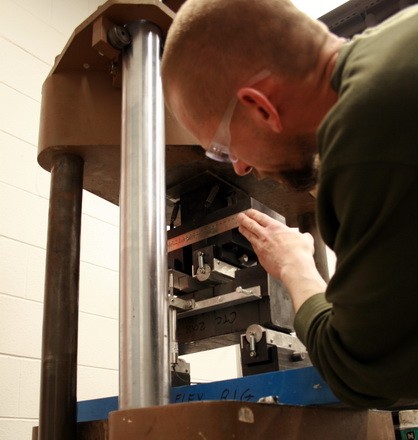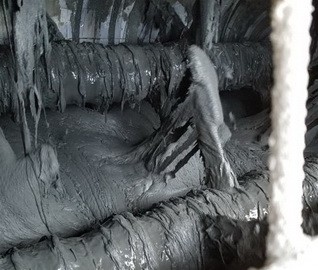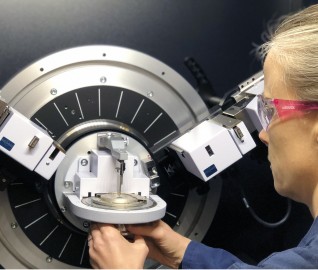
Ultra-high-performance concrete (UHPC) is an emerging class of concrete characterized by ultra-high compressive strength, significant post-cracking ductility, and exceptional durability compared to conventional concrete. UHPC is usually distinguished from conventional or high-performance concrete based on its compressive strength, which can range from a minimum of 17,000 psi to more than 30,000 psi. In addition, it also often exhibits post-cracking tensile strengths over 1,000 psi, a more than ten-fold decrease in chloride diffusion rates compared to conventional concrete, and essentially no susceptibility to deterioration by freezing and thawing (Russell & Graybeal, 2013). Most UHPC is also self-consolidating.
Because of these exceptional performance characteristics, UHPC has the potential to provide numerous benefits to the structural precast concrete industry, from enabling structural designs with smaller cross-sections, greater prestressing and reduced conventional reinforcing, to allowing the production of longer-span elements with fewer intermediate supports, thereby providing more usable space between bridge piers and building columns and accelerating the construction process. Read on to learn more about the recent advances in the development and implementation of non-proprietary UHPC in the structural precast concrete industry.
This article was originally published in the June 2019 issue of STRUCTURE magazine, exclusively published for the practicing structural engineer.
RELATED INFORMATION
-
 John S. Lawler, PrincipalWJE Northbrook MORE >People | John S. Lawler, Principal
John S. Lawler, PrincipalWJE Northbrook MORE >People | John S. Lawler, Principal -
 Elizabeth I. Wagner, Senior AssociateWJE Northbrook MORE >People | Elizabeth I. Wagner, Senior Associate
Elizabeth I. Wagner, Senior AssociateWJE Northbrook MORE >People | Elizabeth I. Wagner, Senior Associate -
 Introduction to UHPC, and a discussion of its development and properties MORE >Webinars | Introduction to Ultra-High Performance Concrete
Introduction to UHPC, and a discussion of its development and properties MORE >Webinars | Introduction to Ultra-High Performance Concrete -
 WJE's Janney Technical Center (JTC) provides advanced testing and forensic capabilities to... MORE >Labs | Janney Technical Center
WJE's Janney Technical Center (JTC) provides advanced testing and forensic capabilities to... MORE >Labs | Janney Technical Center



































